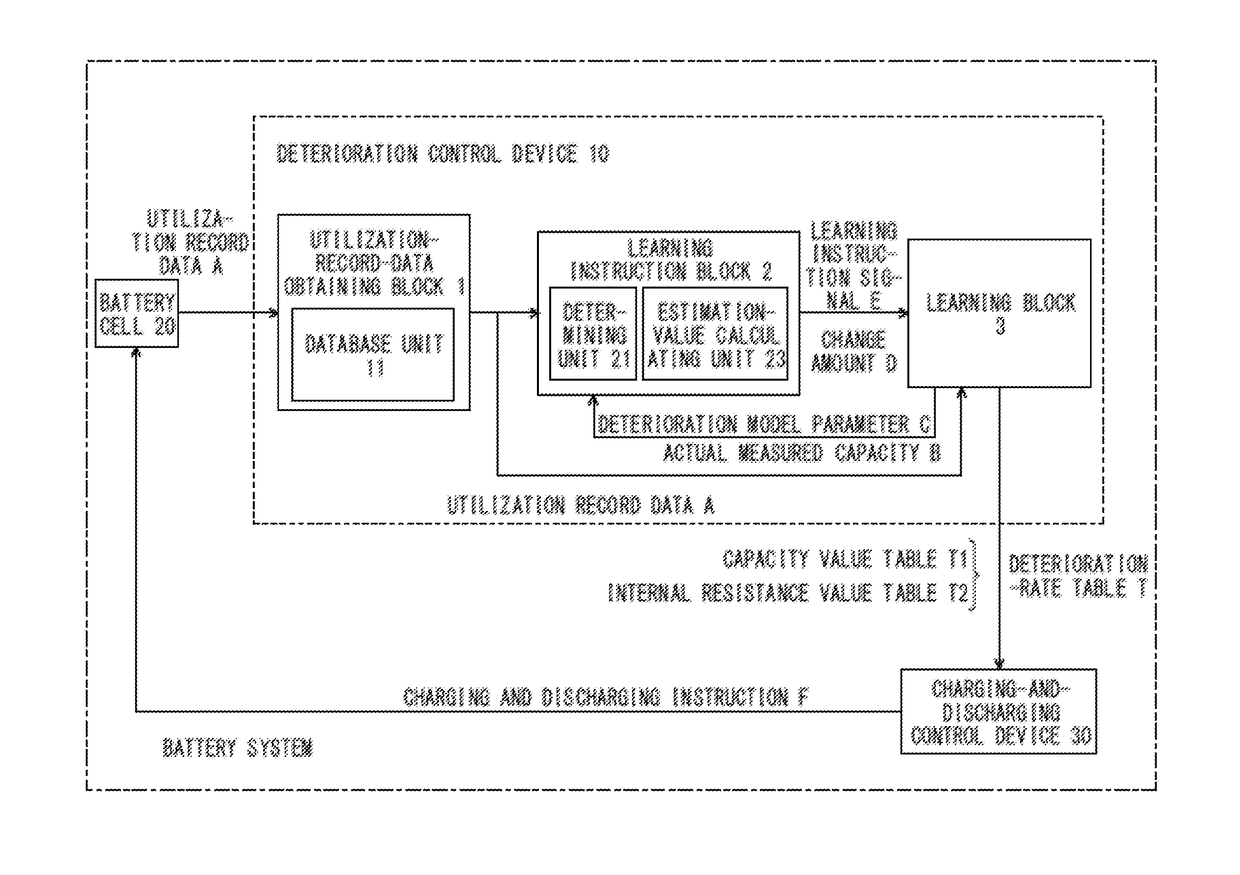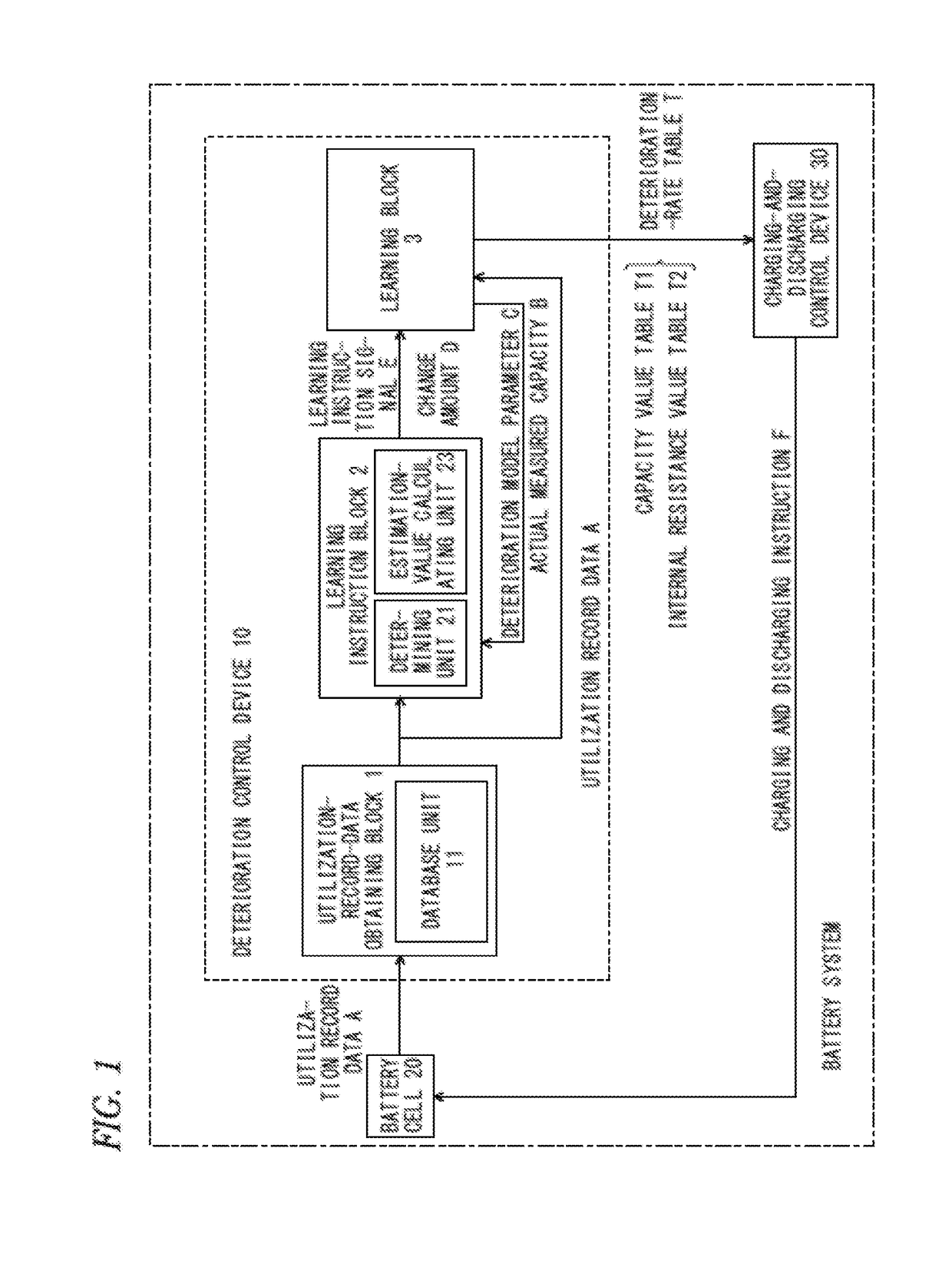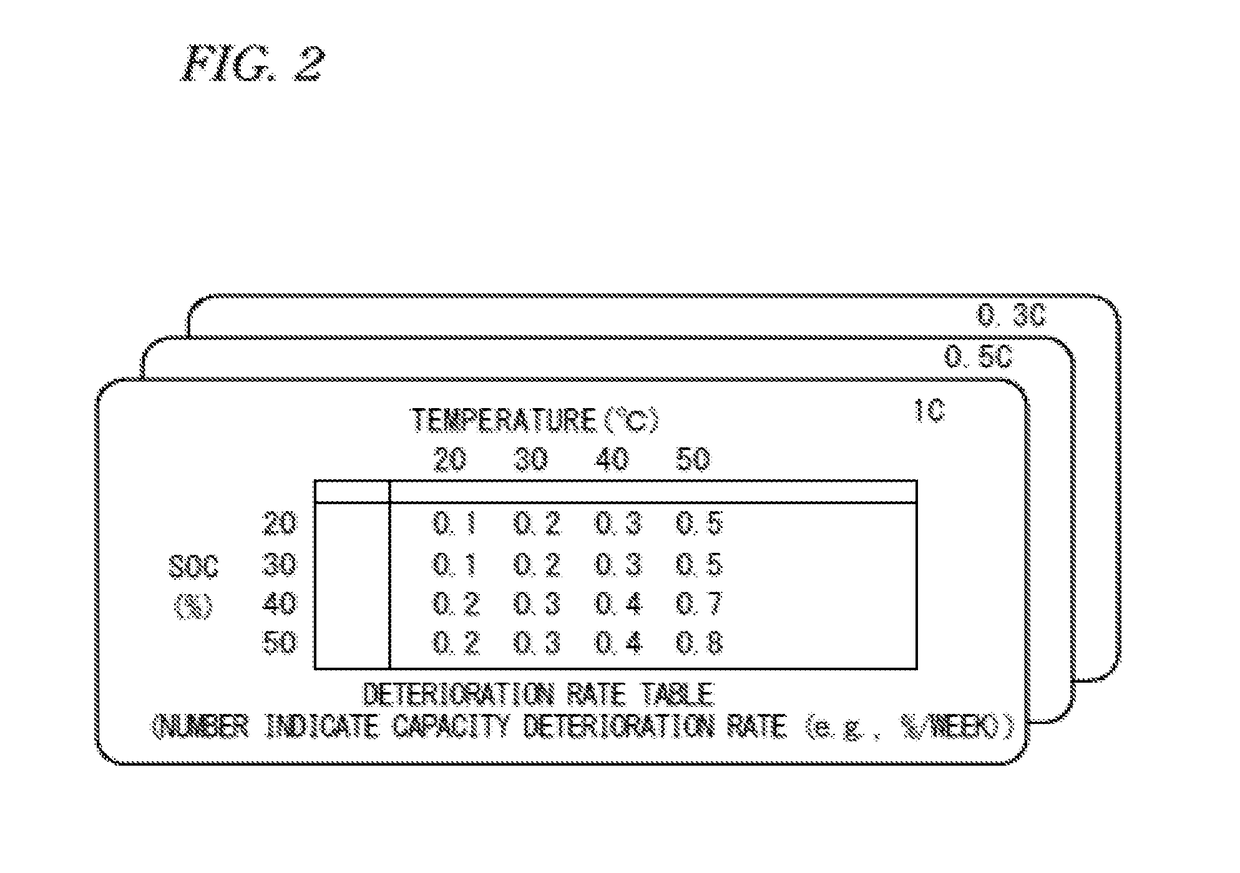Battery-system-deterioration control device, and method thereof
a control device and battery system technology, applied in adaptive control, secondary cell servicing/maintenance, instruments, etc., can solve problems such as deterioration control devices, and achieve the effects of reducing the amount of data, reducing the effect of deterioration state variability, and highly precise deterioration models
- Summary
- Abstract
- Description
- Claims
- Application Information
AI Technical Summary
Benefits of technology
Problems solved by technology
Method used
Image
Examples
first embodiment
(3) First Embodiment
[0076][Structure]
[0077]According to a first embodiment, the learning block 3 among the three blocks in the deterioration control device 10 has characteristic structures. As illustrated in FIG. 3, the learning block 3 includes a current integrating unit 31, a constant-current-capacity detecting unit 32, a constant-voltage-capacity detecting unit 33, and a deterioration-rate-table learning unit 34. Among those units, the current integrating unit 31 calculates the actual measured capacity B in accordance with the utilization record data A from the utilization-record-data obtaining block 1 and detection signals G1, G2 from the detecting units 32, 33, and outputs the actual measured capacity B to the learning instruction block 2.
[0078]By combining the current integrating unit 31 and the constant-current-capacity detecting unit 32, a capacity at a constant current is calculated, and by combining the current integrating unit 31 and the constant-voltage-capacity detectin...
second embodiment
(4) Second Embodiment
[0110][Structure]
[0111]According to a second embodiment, the learning block 3 has characteristic features, like the first embodiment, and the basic structure is the same as that of the first embodiment. Hence, the same structural component as that of the first embodiment will be denoted by the same reference numeral, and the explanation thereof will be omitted. The learning block 3 in the first embodiment has all structural components provided at the local side.
[0112]On the other hand, according to the second embodiment, although the learning block 3 employs the same structure, the location where the structural components are provided is divided into the local side of the battery system and the server side thereof. FIG. 9 illustrates such structure according to the second embodiment. As illustrated in FIG. 9, the learning block in the second embodiment is divided into a learning block 3A at the local side, and a learning block 3B at the server side.
[0113]The lea...
third embodiment
(5) Third Embodiment
[0121]Following third to sixth embodiments have characteristic features in the structure of the utilization-record-data obtaining block 1. The utilization-record-data obtaining block 1 is one of the three blocks which are roughly divided in the deterioration control device 10. In the third to sixth embodiments, the structures other than the utilization-record-data obtaining block 1 is the same as those of the first embodiment, and the explanation thereof will be omitted.
[0122][Structure]
[0123]As illustrated in FIG. 11, the utilization-record-data obtaining block 1 according to the third embodiment includes, in addition to the database unit 11 explained in the paragraph [0029], a characteristic parameter detecting unit 12. The characteristic parameter detecting unit 12 is connected to a first simulation unit 14A and an encoding unit 15, and the first simulation unit 14A is connected to a difference detecting unit 13.
[0124]The difference detecting unit 13 is connec...
PUM
 Login to View More
Login to View More Abstract
Description
Claims
Application Information
 Login to View More
Login to View More - R&D
- Intellectual Property
- Life Sciences
- Materials
- Tech Scout
- Unparalleled Data Quality
- Higher Quality Content
- 60% Fewer Hallucinations
Browse by: Latest US Patents, China's latest patents, Technical Efficacy Thesaurus, Application Domain, Technology Topic, Popular Technical Reports.
© 2025 PatSnap. All rights reserved.Legal|Privacy policy|Modern Slavery Act Transparency Statement|Sitemap|About US| Contact US: help@patsnap.com



